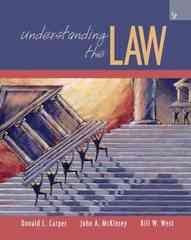please help me with this
Petroleum Economics 1) An oil company exploring offshore has identied a prospect that it believes has great potential. However, the company budget is limited, and management is concerned about solvency if they take on too much risk by themselves. Below is the company' s best estimate for the project and the various options available: Reserves Outcome Probabllty NW NW Dry Hole 0.20 -100 I Producer 0.80 400 The oil company has hired a consultant that has helped them identify their Risk Tolerance of $219.35M and two points on their utility scale: U(-$100M) = 0 and UISSOOM) = 1. The consultant also suggested the best utility formula for their company size would be: If the oil company was risk~neutral in its decisionmaking, which option be the clear choice and why? Complete the non-linear utility formula recommended for the oil company and create a plot of the utility function over the range of monetary values. Include the risk-neutral (MV line} in the plot. Is the oil company risk-averse, risk-neutral, or risk-seeking? Why? Given the investment options provided for the prospect, compute the Expected Utility (EU), Certainty Equivalent (CE), and Risk Premium (RP) for each option. Based on these values, which option is preferable? Why? At what 'dry hole' probability would the Farmout option be chosen based on CE? At what 'dry hole' probability would the Back-in option be chosen based on CE? 2) Based on the following information, construct a Monte Carlo simulation with 100 realizations to find the probability distribution for the before-tax NPV@12% of the following 10-year project: Cash Flow Element Continuous Probability Distribution Distribution Parameters Gross Revenue Mean: $750,000 Standard Normal (per year, varies annually) Standard Deviation: $500,000 Low Estimate: $750,000 CapEx Triangular Most Likely: $1,000,000 (Year-0 only) High Estimate: $2,000,000 OpEx Low Estimate: $200,000 Uniform (per year, varies annually) High Estimate: $300,000 The project has an 85% Net Royalty Interest (NRI) in gross revenues. There are no income taxes and, therefore, no amortization items to account for in this cash flow. CapEx is incurred in Year-0 only. Gross revenues and OpEx are realized annually in years 1 - 10. Submit the following after completing your Monte Carlo simulation of the project: a) A histogram table and plot of your NPV distribution including the frequency distribution, cumulative frequency distribution, and reverse-cumulative frequency distribution. What continuous probability distribution is represented by the project's NPV? b) A histogram table and plot of you CapEx distribution with the frequency distribution, cumulative frequency distribution, and reverse-cumulative frequency distribution. c) What is the expected value and standard deviation of your NPV distribution? d) What is the expected value and standard deviation of your CapEx distribution? e) What is the Expected Profitability Index (EPI) for your project? f) What is the probability that the project will not achieve a break-even NPV? g) What is the probability the project will lose more that $1,000,000








